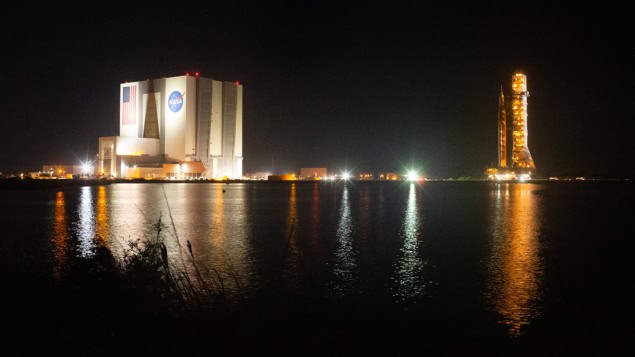
NASA has been warned that it may need to sacrifice new missions in order to rebalance the space agency’s priorities and achieve its long-term objectives. That is the conclusion of a new report – NASA at a Crossroads: Maintaining Workforce, Infrastructure, and Technology Preeminence in the Coming Decades – that finds a space agency battling on many fronts including ageing infrastructure, China’s growing presence in space, and issues recruiting staff.
The report was requested by Congress and published by the National Academies of Sciences, Engineering, and Medicine. It was written by a 13-member committee, which included representatives from industry, academia and government, and was chaired by Norman Augustine, former chief executive of Lockheed Martin. Members visited all nine NASA centres and talked to about 400 employees to compile the report.
While the panel say that NASA had “motivate[ed] many of the nation’s youth to pursue careers in science and technology” and “been a source of inspiration and pride to all Americans”, they highlight a variety of problems at the agency. Those include out-of-date infrastructure, a pressure to prioritize short-term objectives, budget mismatches, inefficient management practices, and an unbalanced reliance on commercial partners. Yet according to Augustine, the agency’s main problem is “the more mundane tendency to focus on near-term accomplishments at the expense of long-term viability”.
As well as external challenges such as China’s growing role in space, the committee discovered that many were homegrown. They found that 83% of NASA’s facilities are past their design lifetimes. For example, the capacity of the Deep Space Network, which provides critical communications support for uncrewed missions, “is inadequate” to support future craft and even current missions such as the Artemis Moon programme “without disrupting other projects”.
There is also competition from private space firms in both technology development and recruitment. According to the report, NASA has strict hiring rules and salaries it can offer. It takes 81 days, on average, from the initial interview to an offer of employment. During that period, the subject will probably receive offers from private firms, not only in the space industry but also in the “digital world”, which offer higher salaries.
In addition, Augustine notes, the agency is giving its engineers less opportunity “to get their hands dirty” by carrying out their own research. Instead, they are increasingly managing outside contractors who are doing the development work. At the same time, the report identifies a “major reduction” over the past few decades in basic research that is financed by industry – a trend that the report says is “largely attributable to shareholders seeking near-term returns as opposed to laying groundwork for the future”.
Yet the committee also finds that NASA faces “internal and external pressure to prioritize short-term measures” without considering longer-term needs and implications. “If left unchecked these pressures are likely to result in a NASA that is incapable of satisfying national objectives in the longer term,” the report states. “The inevitable consequence of such a strategy is to erode those essential capabilities that led to the organization’s greatness in the first place and that underpin its future potential.”
Cash woes
Another concern is the US government budget process that operates year by year and is slowly reducing NASA’s proportional share of funding. The report finds that the budget is “often incompatible with the scope, complexity, and difficulty of [NASA’s] work” and the funding allocation “has degraded NASA’s capabilities to the point where agency sustainability is in question”. Indeed, during the agency’s lifetime, the proportion of the US budget devoted to government R&D has declined from 1.9% of gross domestic product to 0.7%. The panel also notes a trend of reducing investment in research and technology as a fraction of funds devoted to missions. “NASA is likely to face budgetary problems in the future that greatly exceed those we’ve seen in recent years,” Augustine told a briefing. NASA demands new designs for cost-hit Mars Sample Return mission
The panel now calls on NASA to work with Congress to establish “an annually replenished revolving fund – such as a working capital fund” to maintain and improve the agency’s infrastructure. It would be financed by the US government as well as users of NASA’s facilities and be “sufficiently capitalized to eliminate NASA’s current maintenance backlog over the next decade”. While it is unclear how the government and the agency will react to that proposal, as Augustine warned, for NASA, “this is not business as usual”.



